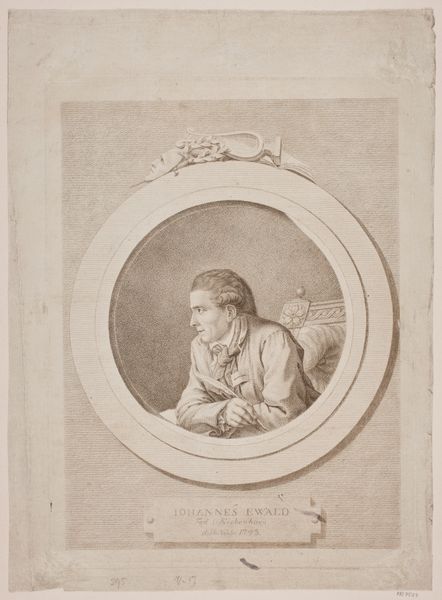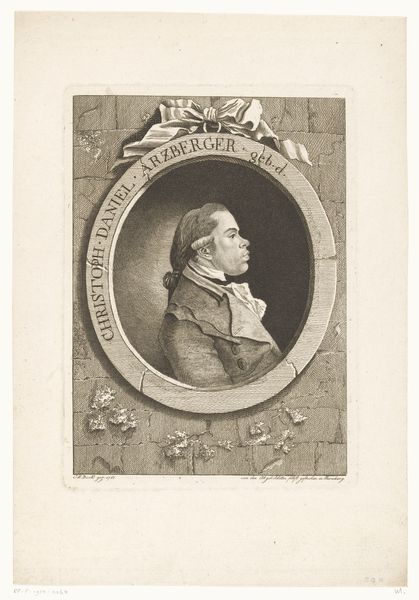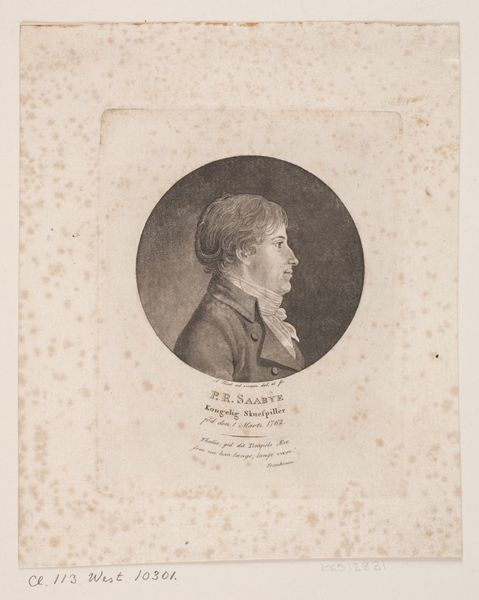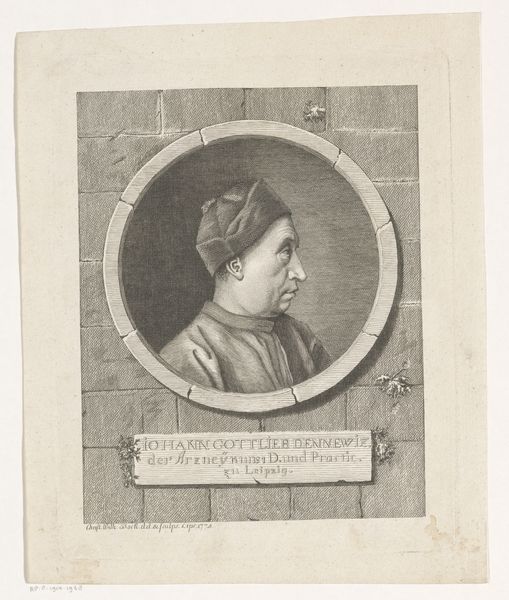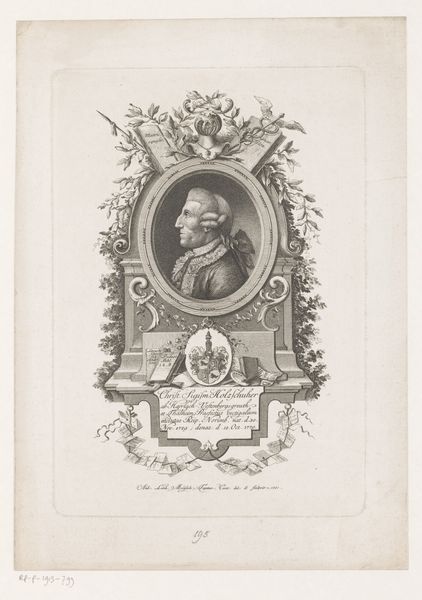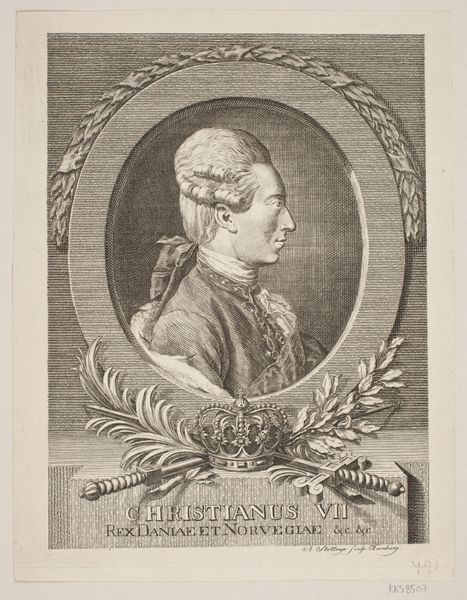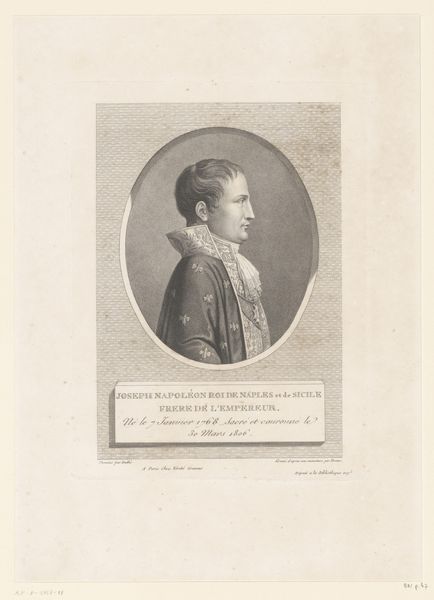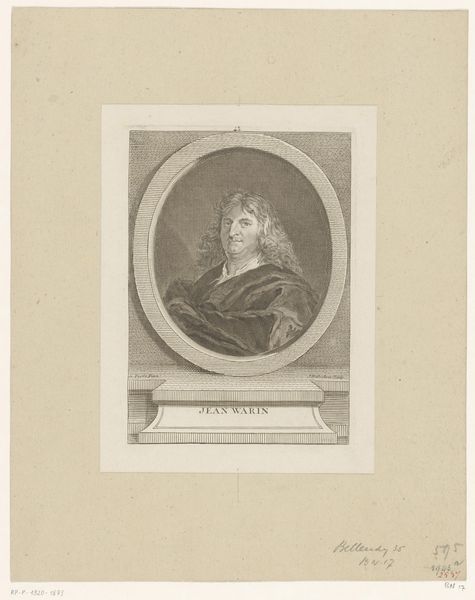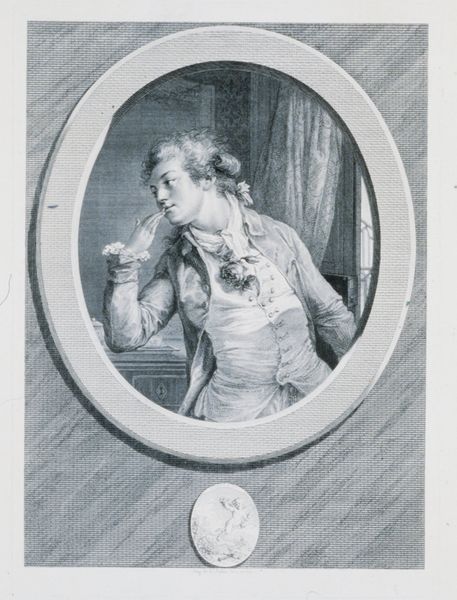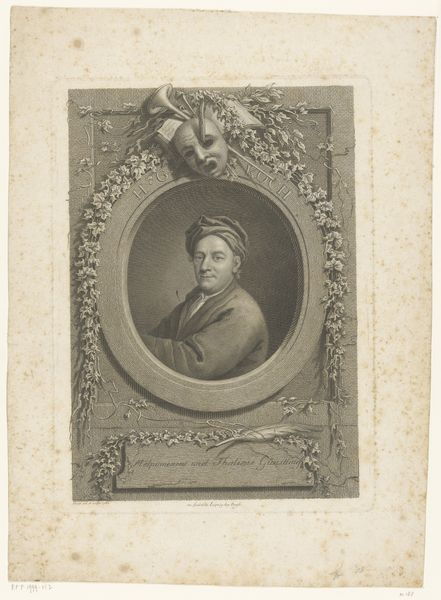
print, engraving
#
neoclacissism
# print
#
engraving
Dimensions: 325 mm (height) x 245 mm (width) (plademaal)
Editor: Here we have "Johannes Ewald," an engraving from 1779, created by Terkel Kleve. The subject is framed in an oval, like a cameo. It’s so precise and neat... What strikes me is the sitter's gaze – it seems to look towards a better future. How do you interpret this work? Curator: Well, this portrait gives us a glimpse into the late 18th century and its ideals. Note the neoclassical frame, referencing a revival of classical antiquity's aesthetics, which often intersected with Enlightenment values. Who was considered worthy of memorializing and how were those decisions tied to gender, class and nation building at the time? Editor: That's interesting. I see the Neoclassical influence in the frame but I hadn't thought about who got memorialized and why. Curator: Exactly! Now, consider Ewald's identity as a poet and playwright in the context of burgeoning Danish nationalism. Kleve is presenting him in a way that reinforces societal expectations of leadership and creativity, through an elite cultural lens. The image of the poet-intellectual advances the power of certain narratives while obscuring others. Who is left out of the frame? Editor: I see what you mean. The portrait promotes one idea of Danish identity tied to literature, while it normalizes the exclusion of others. It’s a very specific narrative being constructed. Curator: Precisely! By understanding this, we can start to deconstruct the power dynamics embedded within seemingly straightforward portraiture. Art becomes an entry point for understanding broader social and historical narratives. Editor: I hadn’t considered it that way before. I’m starting to understand the weight that images can carry, beyond their surface appearance.
Comments
No comments
Be the first to comment and join the conversation on the ultimate creative platform.

